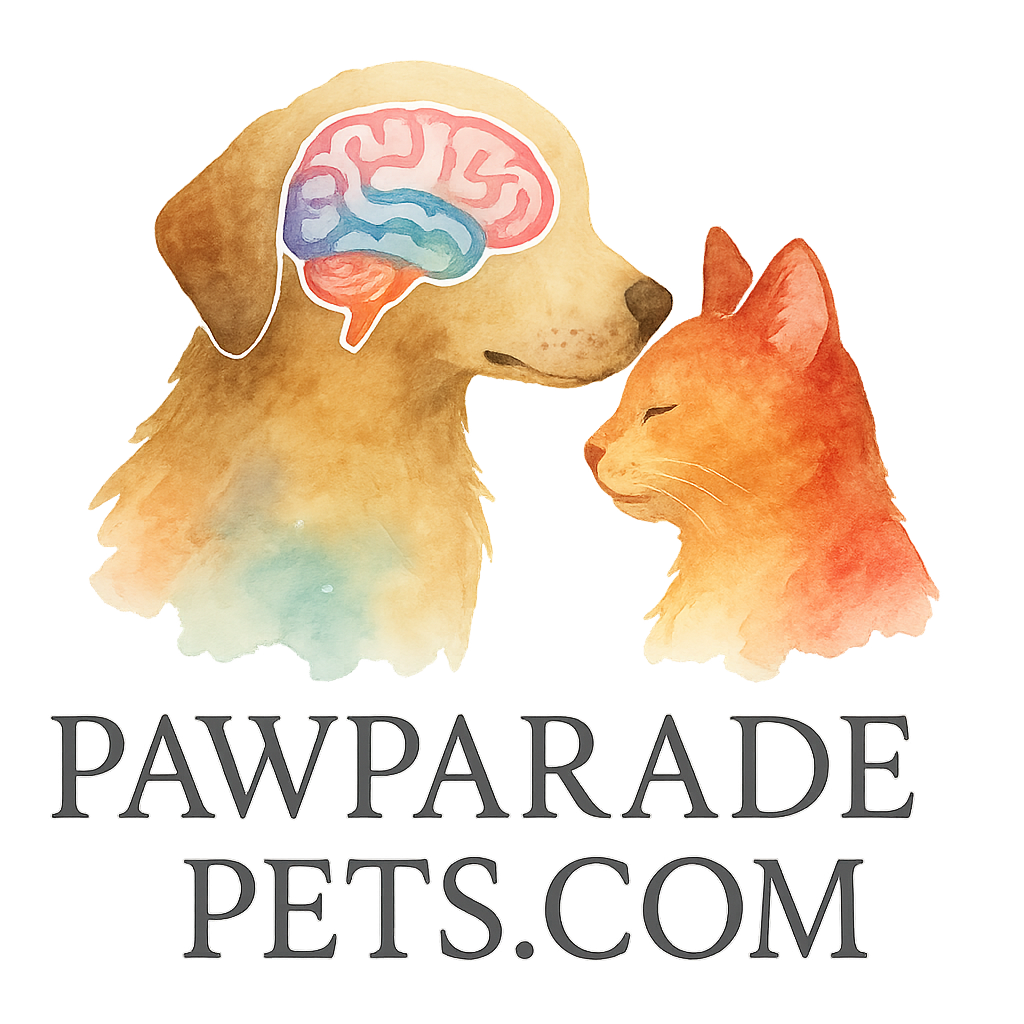Introduction to Brain Training for Pets
Ever noticed how your furry friend sometimes looks bored even after a long walk or play session? That’s because pets need more than just physical exercise — they need mental workouts too! Brain training for pets is like solving puzzles for us humans: it keeps them sharp, entertained, and happy.
In this guide, we’ll explore 8 exciting brain training challenges that will take playtime to the next level and help your pets become smarter, more obedient, and more engaged.
Why Brain Training Matters for Pets
Mental Stimulation and Health
Just like humans, pets need to keep their brains active. When their minds are engaged, they’re less likely to develop anxiety, stress, or destructive habits.
Strengthening the Bond with Owners
Training sessions are more than just teaching tricks. They’re opportunities to bond. When you interact with your pet through games and activities (see here), you build trust and create shared joy.
Reducing Behavioral Issues
Many unwanted behaviors like chewing shoes, digging holes, or barking excessively stem from boredom. A busy brain means a calmer pet.
Getting Started with Brain Training
The Basics Every Pet Parent Should Know
Before diving into challenges, understand the brain training basics. Start simple, be consistent, and keep training fun.
Tools and Toys for Brain Training
You’ll need the right gear! From toys and gadgets to DIY objects at home, there are endless options to challenge your pet’s mind.
How Often Should You Train Your Pet’s Brain?
Aim for 10–15 minutes daily. Think of it like brain “snack time.” Short, regular sessions are better than one long exhausting one.
Challenge #1: Puzzle Feeders and Food Games
Why Puzzle Feeders Work
Puzzle feeders turn mealtime into brain time. Instead of gulping food, pets must solve mini-puzzles to get rewards.
Best Puzzle Games for Dogs and Cats
From snuffle mats to treat-dispensing balls, these toys make pets work for their food — boosting problem-solving skills (explore activities here).
Challenge #2: Obedience Training with a Twist
Advanced Commands Beyond Sit and Stay
Obedience training doesn’t have to be boring. Go beyond the basics with advanced cognitive challenges like “put your toys away” or “find the red ball.”
Turning Commands into Fun Games
Combine behavior and obedience with play by rewarding your pet for completing commands in playful scenarios.
Challenge #3: Hide and Seek Games
Object Hiding Challenges
Hide toys or treats around the house and encourage your pet to sniff them out. It’s like a treasure hunt!
People Hide and Seek for Dogs
Dogs love finding their humans. Call their name from a hidden spot — it trains recall and boosts excitement.
Challenge #4: Scent Work and Nose Games
Easy DIY Nose Work Games
Hide treats under cups or boxes and let your pet figure out where the smell is coming from.
Advanced Scent Tracking Activities
Teach them to follow a scent trail outdoors. This taps into natural instincts and provides deep brain stimulation.

Challenge #5: Interactive Toys and Gadgets
Smart Devices That Engage Your Pet
From treat-launching gadgets to laser-chasing robots, the tech world is full of interactive toys for mental enrichment.
Choosing the Right Interactive Toy
Match the toy to your pet’s size, energy, and intelligence. A good toy should challenge but not frustrate.
Challenge #6: Agility and Obstacle Training
Indoor Obstacle Courses
Use chairs, pillows, and tunnels to create an agility course indoors. It’s a great way to keep pets busy on rainy days.
Outdoor Agility Setups
Set up hurdles, weave poles, and tunnels in the yard. This combines physical play with brain training.
Challenge #7: Trick Training for Smarter Play
Fun Tricks That Boost Intelligence
Tricks like “roll over,” “high five,” or “spin” are not only cute but also improve your pet’s learning capacity.
Building on Existing Tricks
Chain tricks together — for example, fetch a toy, put it in a box, then close the lid. That’s advanced thinking!
Challenge #8: Social Brain Training
Group Play and Dog Parks
Social interaction itself is brain training. Pets learn boundaries, cues, and problem-solving when playing with others.
Brain Challenges with Other Pets
Organize playdates where pets solve games and challenges together.
Benefits of Brain Training for Pets
Mental and Physical Health
Brain training keeps pets sharp, reduces stress, and even helps with longevity. A smart pet is a healthy pet.
Long-Term Behavior Improvements
Consistent training leads to better manners, obedience, and overall quality of life.
Common Mistakes in Brain Training
Training Too Long or Too Hard
Keep sessions short and positive. Overloading can frustrate pets and make them lose interest.
Not Adjusting to Your Pet’s Needs
Every pet is unique. What excites one may bore another. Observe, adapt, and keep it fun.
Tips for Success in Brain Training
Keeping Sessions Fun and Positive
Always end on a win. Reward with treats, praise, or cuddles. Training should feel like playtime.
Consistency and Patience
Results won’t come overnight. But with steady practice, you’ll see amazing progress.
Conclusion
Brain training isn’t just about teaching tricks; it’s about unlocking your pet’s full potential. These 8 challenges turn everyday play into a fun, stimulating adventure that sharpens their mind, strengthens your bond, and keeps them happier and healthier.
Start small, stay consistent, and remember — a smart pet is a happy pet! For more training tips, toys, and activities, check out Paw Parade Pets.
FAQs
Q1: How often should I do brain training with my pet?
Daily short sessions of 10–15 minutes are ideal for keeping your pet sharp.
Q2: Can cats benefit from brain training too?
Absolutely! Cats love puzzle feeders, scent games, and interactive toys.
Q3: What age can I start brain training my pet?
You can start as early as puppyhood or kittenhood, but older pets benefit too.
Q4: Do I need special equipment for brain training?
Not always. While toys and gadgets help, many games can be DIY with household items.
Q5: How do I know if my pet is enjoying brain training?
Look for wagging tails, purring, or excitement to play. If they seem stressed, simplify the challenge.
Q6: Can brain training help with problem behaviors?
Yes! Many behavior and obedience issues improve with regular mental stimulation.
Q7: What’s the best first brain training challenge to start with?
Puzzle feeders are a fantastic beginner-friendly option. They’re simple, engaging, and rewarding.


